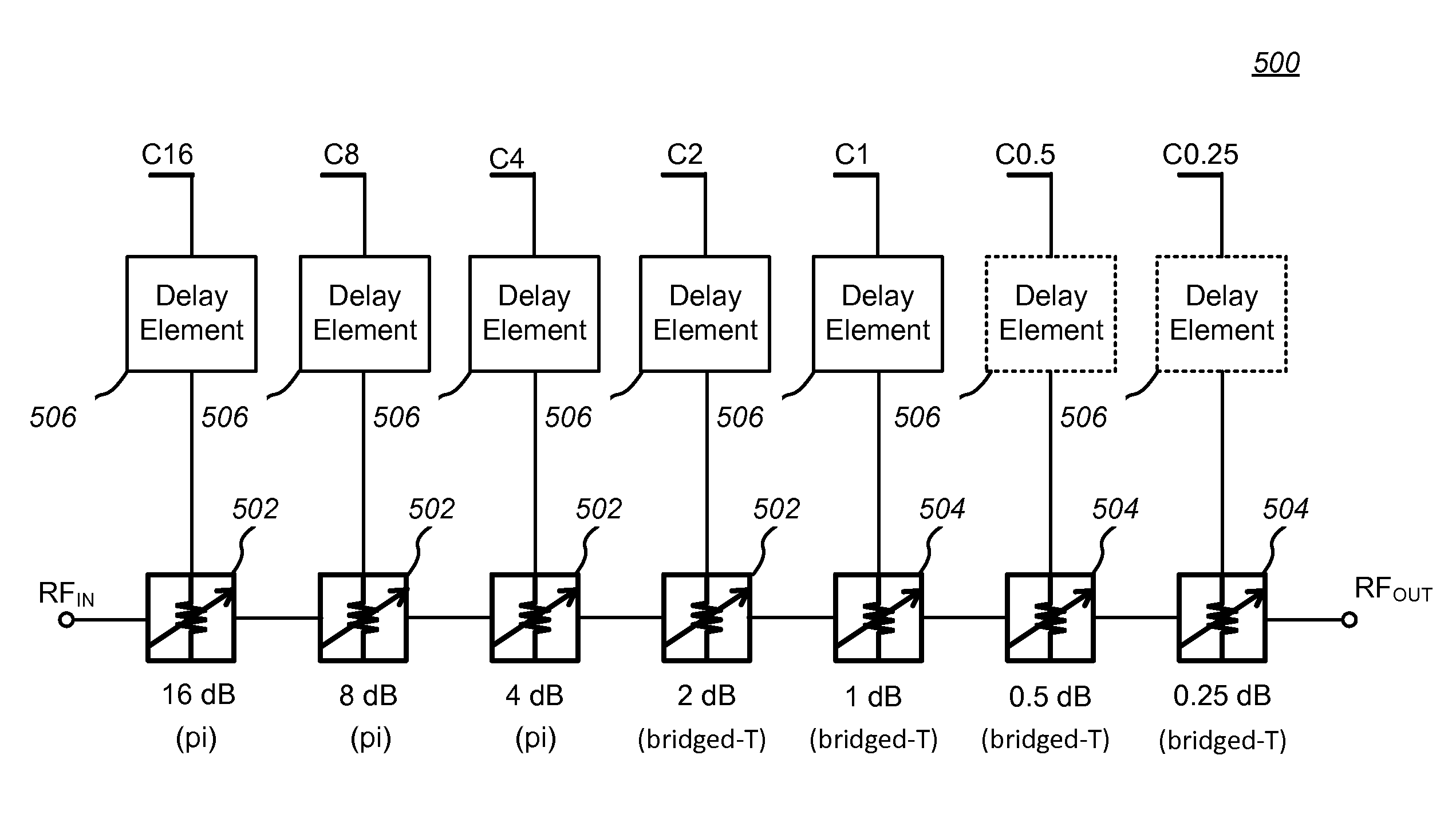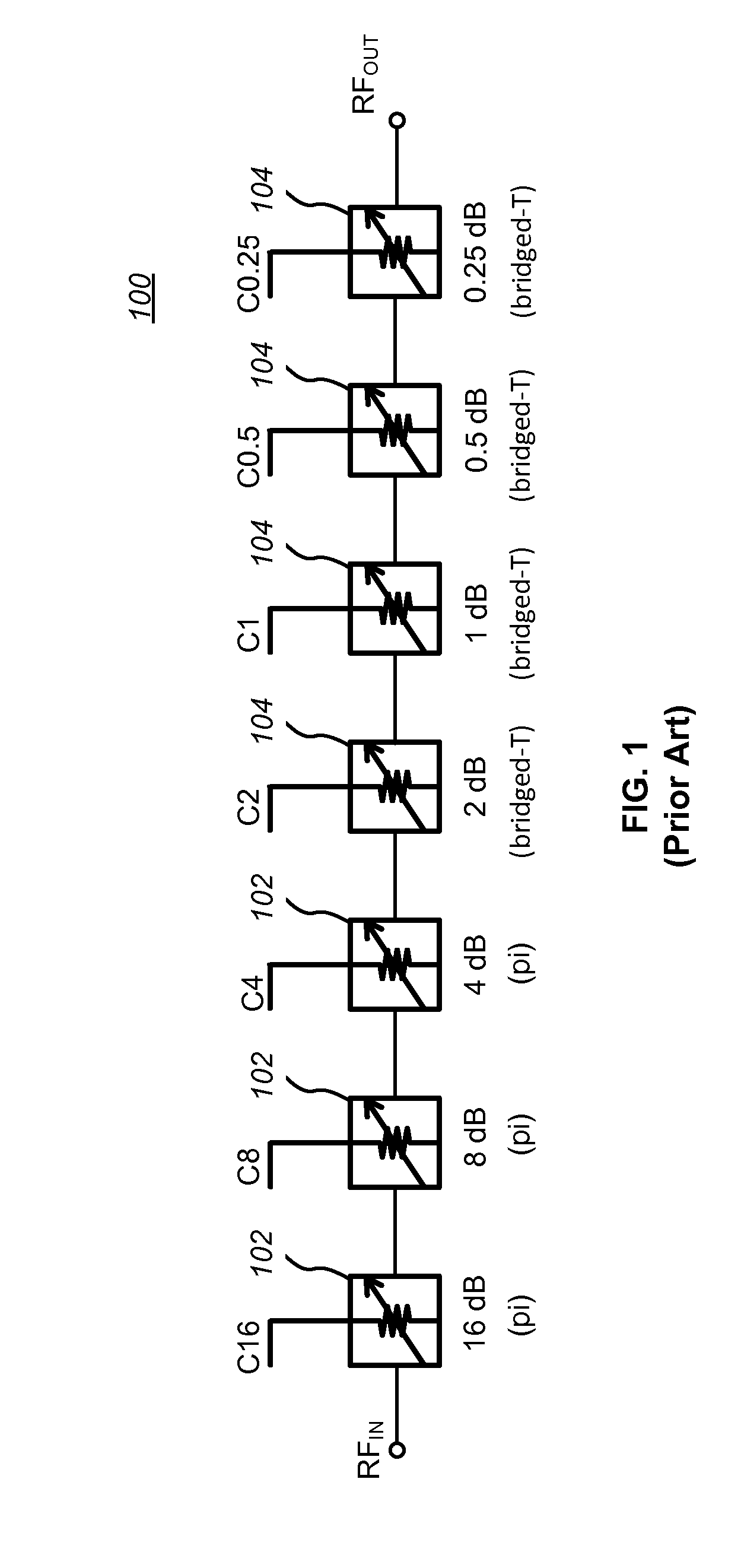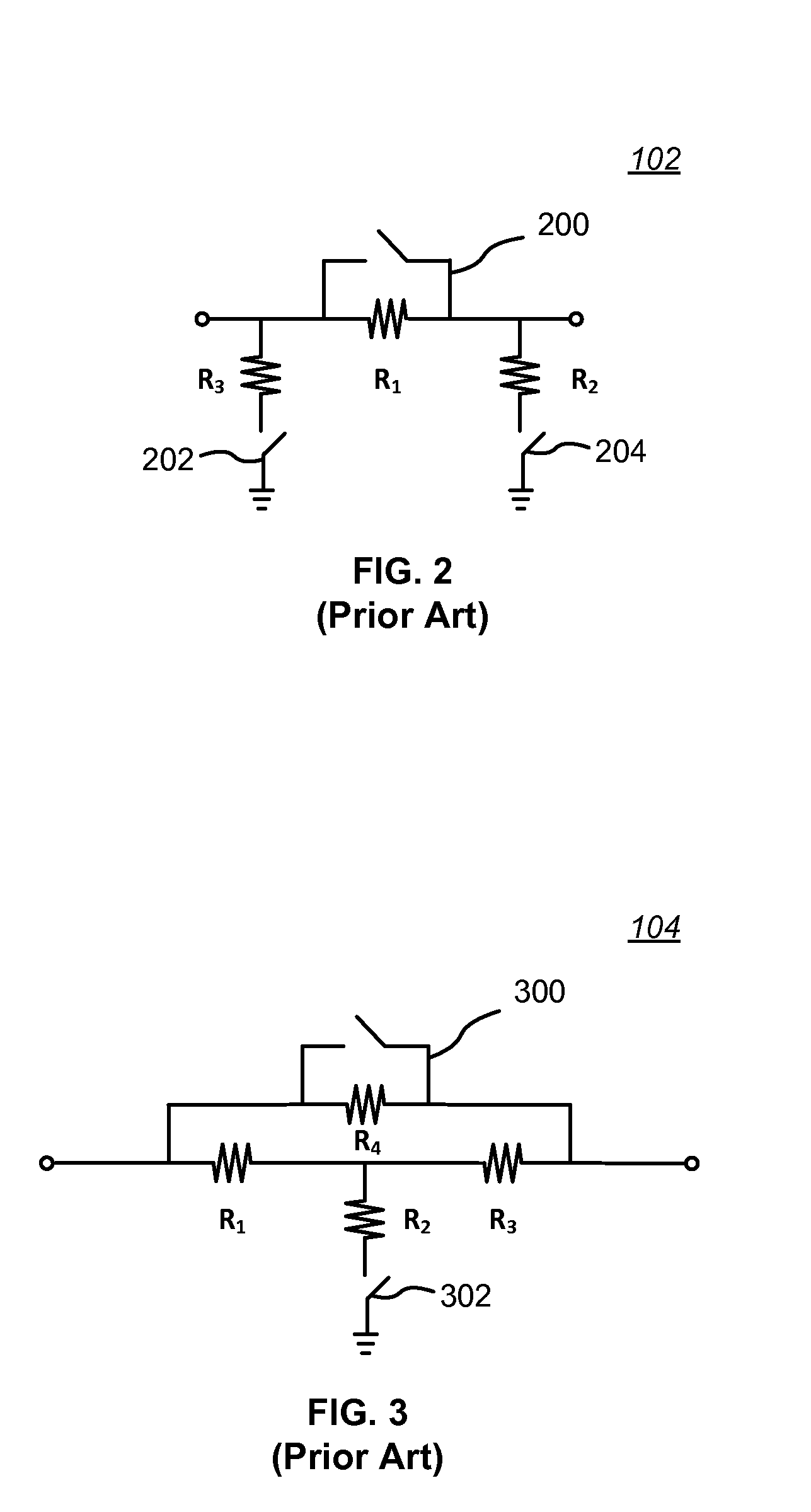Method and Apparatus for Preventing Digital Step Attenuator Output Power Peaking During Attenuation State Transitions
a digital step attenuator and output power technology, applied in electrical apparatus, multiple-port network, frequency-dependent attenuators, etc., can solve problems such as unwanted detection errors, component switching elements in attenuator stages that do not turn, and glitches that can degrade the performance of or damage a system in which such a dsa is embedded, so as to reduce positive switching transients (glitches), reduce power, and increase attenuation
- Summary
- Abstract
- Description
- Claims
- Application Information
AI Technical Summary
Benefits of technology
Problems solved by technology
Method used
Image
Examples
Embodiment Construction
[0024]The invention is a method and circuit for significantly reducing positive switching transients (glitches) of digital step attenuators (DSA's) by controlling the timing of state transitions for individual attenuator stages within a DSA. Such control prevents the DSA output power from peaking during attenuation state transitions and ensures that any transient glitch during the transition results in reduced power at the DSA output. Attenuation stage timing delay can be implemented on an integrated circuit die or “chip” for monolithic implementations of a DSA by adding circuitry which ensures that any attenuation state changes result in increased attenuation rather than decreased attenuation, thereby reducing or eliminating positive transient glitches at the DSA output.
[0025]An aspect of the invention is to begin switching selected attenuator stages going from the OFF state (insertion loss mode) to the ON state (attenuation mode) first during attenuation state changes, and delayin...
PUM
 Login to View More
Login to View More Abstract
Description
Claims
Application Information
 Login to View More
Login to View More - R&D
- Intellectual Property
- Life Sciences
- Materials
- Tech Scout
- Unparalleled Data Quality
- Higher Quality Content
- 60% Fewer Hallucinations
Browse by: Latest US Patents, China's latest patents, Technical Efficacy Thesaurus, Application Domain, Technology Topic, Popular Technical Reports.
© 2025 PatSnap. All rights reserved.Legal|Privacy policy|Modern Slavery Act Transparency Statement|Sitemap|About US| Contact US: help@patsnap.com



